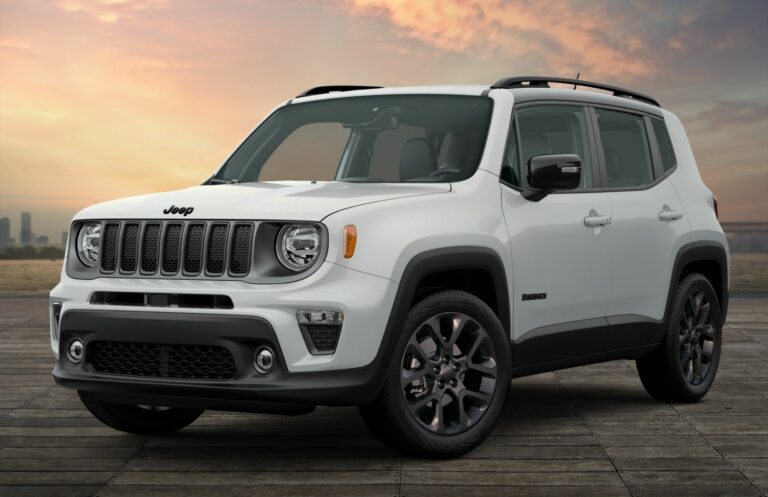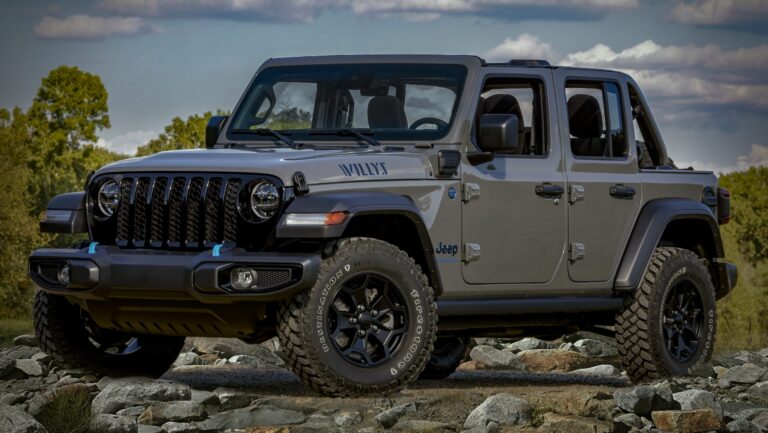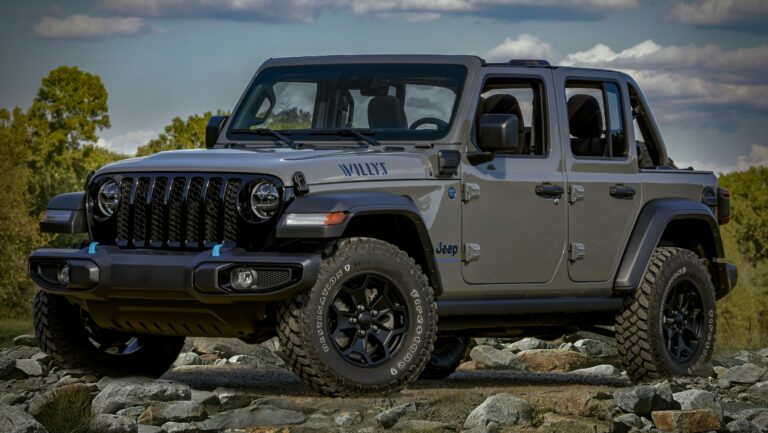How Much Oil For 2012 Jeep Wrangler: A Comprehensive Guide to Engine Longevity
How Much Oil For 2012 Jeep Wrangler: A Comprehensive Guide to Engine Longevity jeeps.truckstrend.com
The 2012 Jeep Wrangler, a beloved icon of off-road prowess and adventurous spirit, holds a special place in the hearts of its owners. Whether you’re navigating urban jungles or conquering rugged trails, maintaining your Wrangler in peak condition is paramount. A critical component of this maintenance, often overlooked or misunderstood, is understanding the correct engine oil quantity and type. Getting it right isn’t just about avoiding a breakdown; it’s about ensuring optimal performance, maximizing fuel efficiency, and extending the lifeblood of your vehicle: its engine.
This comprehensive guide will delve into everything you need to know about oil for your 2012 Jeep Wrangler, from the precise amount required to the best type to use, essential maintenance tips, and troubleshooting common issues. By the end, you’ll be equipped with the knowledge to keep your Wrangler roaring for years to come.
How Much Oil For 2012 Jeep Wrangler: A Comprehensive Guide to Engine Longevity
Understanding Your 2012 Jeep Wrangler Engine Options
For the 2012 model year, Jeep made a significant upgrade to the Wrangler’s powertrain. The previous 3.8L V6 engine was replaced with the more powerful, efficient, and refined 3.6-liter Pentastar V6 engine. This engine became the standard and primary choice for all 2012 Wrangler models, including the two-door JK and four-door JKU Unlimited.
The introduction of the Pentastar V6 was a game-changer, offering a substantial boost in horsepower (from 202 hp to 285 hp) and torque (from 237 lb-ft to 260 lb-ft), along with improved fuel economy. This modern engine has specific lubrication requirements that differ from its predecessor, making it crucial to use the correct oil quantity and specifications.
The Crucial Question: How Much Oil Does a 2012 Jeep Wrangler Take?
For the 2012 Jeep Wrangler equipped with the 3.6L Pentastar V6 engine, the recommended engine oil capacity is 6 US quarts (approximately 5.6 liters).
It’s vital to note that this capacity is for an oil change that includes replacing the oil filter. When performing an oil change, always start by adding slightly less than the full capacity (e.g., 5.5 quarts), then start the engine briefly to circulate the oil, turn it off, wait a few minutes for the oil to settle, and then check the dipstick. Add small amounts as needed until the oil level is within the safe operating range, typically between the "MIN" and "MAX" marks on the dipstick. Never overfill your engine.
Always consult your vehicle’s owner’s manual for the most accurate and up-to-date information regarding oil capacity and specifications.
Beyond Quantity: The Right Oil Type and Viscosity

While knowing the quantity is essential, using the correct type and viscosity of oil is equally, if not more, critical for the longevity and performance of your 3.6L Pentastar engine.
-
Viscosity (Weight): For the 2012 Jeep Wrangler with the 3.6L Pentastar V6, the recommended engine oil viscosity is SAE 5W-20.
- What does 5W-20 mean? The "5W" indicates the oil’s viscosity at cold temperatures ("W" stands for winter). A lower number means the oil flows more easily in cold weather, allowing for quicker lubrication during cold starts. The "20" indicates the oil’s viscosity at normal operating temperatures. A lower number here means the oil is thinner when hot, which can improve fuel economy.
- Using the recommended viscosity ensures proper lubrication across the engine’s operating temperature range, protecting components from wear and tear.


Oil Type: Full Synthetic is Key!
- The 3.6L Pentastar V6 engine is designed to operate with Full Synthetic engine oil. While some older engines might tolerate conventional or synthetic blend oils, the Pentastar thrives on the superior protection and performance offered by full synthetic.
- Why Full Synthetic?
- Superior Lubrication: Synthetic oils offer better lubrication properties, especially at extreme temperatures, reducing friction and wear.
- Enhanced Stability: They are more resistant to breakdown from heat and oxidation, leading to longer drain intervals and less sludge formation.
- Improved Fuel Economy: Reduced friction can contribute to slightly better fuel efficiency.
- Engine Cleanliness: Synthetics keep engine components cleaner by preventing deposits and sludge buildup.
-
API Certification and Standards:
- Look for engine oils that meet or exceed the latest API (American Petroleum Institute) service classification, such as API SN, SP, or higher. These certifications indicate that the oil has passed rigorous tests for protection against wear, sludge, and piston deposits.
- Additionally, look for ILSAC GF-5 or GF-6 certification, which indicates improved fuel economy and emission system protection.
Why Proper Oil Maintenance Matters for Your Wrangler
Neglecting your Wrangler’s oil can lead to severe and costly engine damage. Conversely, adhering to proper oil maintenance practices offers a multitude of benefits:
- Engine Longevity: Clean, properly specified oil is the lifeblood of your engine, reducing friction and wear on critical components like bearings, pistons, and camshafts. This directly translates to a longer lifespan for your engine.
- Optimal Performance: Fresh oil ensures that all moving parts are adequately lubricated, allowing the engine to run smoothly and efficiently, maintaining its designed power output and responsiveness.
- Improved Fuel Efficiency: The correct viscosity oil reduces internal engine drag, contributing to better fuel economy. Dirty or incorrect oil can increase friction, forcing the engine to work harder.
- Heat Dissipation: Engine oil also plays a crucial role in cooling the engine by carrying heat away from hot components. Clean oil can dissipate heat more effectively.
- Sludge and Deposit Prevention: High-quality synthetic oil, changed at recommended intervals, prevents the buildup of harmful sludge and carbon deposits that can clog oil passages and starve components of lubrication.
- Warranty Compliance: Using the specified oil type and adhering to recommended oil change intervals is often a requirement to keep your vehicle’s warranty valid.
Step-by-Step Guide: Changing Your Wrangler’s Oil
While professional service is always an option, changing your own oil can be a rewarding and cost-saving DIY task.
-
Gather Your Supplies:
- 6 quarts of Full Synthetic SAE 5W-20 engine oil (API SN/SP, ILSAC GF-5/GF-6 certified)
- New oil filter (Mopar recommended, or a high-quality aftermarket equivalent)
- Oil drain pan
- Socket wrench and appropriate socket for the drain plug (usually 13mm or 15mm)
- Oil filter wrench (cap-style for the Pentastar’s cartridge filter)
- Funnel
- Rags or shop towels
- Jack and jack stands (or ramps) for safe access
- Gloves
-
Prepare the Vehicle: Drive your Wrangler for a few minutes to warm the engine slightly (this helps the oil flow better). Park on a level surface, engage the parking brake, and put the vehicle in Park (automatic) or Neutral (manual). Safely lift the front of the vehicle using a jack and secure it with jack stands, or drive onto ramps.
-
Locate and Drain Oil:
- Place the drain pan directly under the oil drain plug, which is typically on the rear passenger side of the oil pan.
- Using the correct socket, carefully loosen and remove the drain plug. Be prepared for oil to flow out immediately.
- Allow all the old oil to drain completely. This can take 10-15 minutes.
-
Replace the Oil Filter:
- The 3.6L Pentastar engine uses a cartridge-style oil filter, located on top of the engine, usually near the front passenger side.
- Use the oil filter wrench to loosen and remove the plastic oil filter housing cap.
- Pull out the old filter element.
- Clean the housing and replace the O-rings (new O-rings usually come with the new filter).
- Insert the new filter element into the housing, ensuring it’s seated correctly.
- Screw the filter housing cap back on by hand, then tighten with the wrench until snug. Do not overtighten.
-
Refill with New Oil:
- Once the oil has finished draining, clean the drain plug and the area around the oil pan. Reinstall the drain plug and tighten it securely (do not overtighten, as you can strip the threads).
- Using a funnel, carefully pour 5.5 quarts of the new 5W-20 full synthetic oil into the engine’s oil fill cap (usually marked with an oil can symbol).
- Replace the oil fill cap.
-
Check and Verify:
- Start the engine and let it run for about 30 seconds to circulate the new oil. Check for any leaks around the drain plug or oil filter housing.
- Turn off the engine and wait 5-10 minutes for the oil to settle.
- Pull out the dipstick, wipe it clean, reinsert it fully, then pull it out again to check the oil level. Add small amounts of oil (e.g., 0.1-0.2 quarts) until the level is between the "MIN" and "MAX" marks.
-
Reset Oil Life Indicator:
- Consult your owner’s manual for the specific steps to reset the "Oil Change Required" light or oil life monitoring system on your 2012 Wrangler. This typically involves turning the ignition to the "ON" position (without starting the engine), fully depressing the accelerator pedal three times within 10 seconds, and then turning the ignition off.
-
Proper Disposal: Never pour used engine oil down the drain or into the trash. Collect it in a sealed container and take it to an authorized recycling center, auto parts store, or service station that accepts used oil.
Important Considerations and Tips
- Oil Change Intervals: For the 2012 Wrangler, the recommended oil change interval is typically every 7,500 to 10,000 miles or every 6-12 months, whichever comes first, under normal driving conditions. However, your Wrangler’s "Oil Change Indicator System" is designed to monitor driving conditions and will illuminate when an oil change is needed.
- Severe Duty: If you frequently engage in heavy off-roading, towing, short trips (less than 10 miles), or driving in extremely dusty, hot, or cold conditions, consider changing your oil and filter more frequently, perhaps every 3,000-5,000 miles.
- Check Oil Regularly: Even between oil changes, make it a habit to check your oil level at least once a month, or before long road trips. This helps catch potential leaks or consumption issues early.
- Quality Oil Filter: Always use a high-quality oil filter. A cheap filter can compromise the effectiveness of your premium synthetic oil. Mopar (OEM) filters are always a safe bet.
- Environmental Factors: While 5W-20 is standard, extremely harsh climates (consistently below -20°F or above 100°F) might warrant a slight adjustment in viscosity, but this is rare for modern multi-viscosity oils and should only be done after consulting the owner’s manual or a certified mechanic.
Potential Challenges and Solutions
- Overfilling: Adding too much oil can cause the crankshaft to churn the oil, leading to aeration (foaming), which reduces lubrication effectiveness. It can also increase pressure, potentially damaging seals and gaskets. If overfilled, drain a small amount until the level is correct.
- Underfilling: Too little oil leads to insufficient lubrication, increased friction, overheating, and rapid engine wear, potentially causing catastrophic engine failure. Always top up immediately if the level is low.
- Stripped Drain Plug/Oil Filter Housing: Overtightening is a common culprit. Always use a torque wrench if possible, or tighten firmly but not excessively. If stripped, specialized repair kits (e.g., oversized drain plugs, helicoils) or professional repair may be needed.
- Oil Leaks: Common culprits include a loose drain plug, a improperly seated oil filter, worn oil pan gasket, or faulty valve cover gaskets. Address leaks promptly to prevent significant oil loss and potential engine damage.
Estimated Cost for Oil and Filter for 2012 Jeep Wrangler (3.6L Pentastar)
Prices can vary significantly based on brand, retailer, and location. This table provides a general estimate.
| Item | Estimated Price Range (USD) | Notes |
|---|---|---|
| Full Synthetic 5W-20 Engine Oil | ||
| (6 Quarts/5.6 Liters) | $30 – $60 | Price varies by brand (Pennzoil, Mobil 1, Valvoline, Castrol, etc.) |
| Oil Filter (Cartridge Type) | ||
| Mopar (OEM) | $8 – $15 | Recommended for best fit and performance. |
| High-Quality Aftermarket | $5 – $12 | Brands like Wix, Fram Ultra Synthetic, Mann, PurolatorONE. |
| Drain Plug Washer/Gasket | $1 – $3 | Often included with new drain plugs, or sold separately. Recommended. |
| Total DIY Cost (Estimates) | $36 – $78 | (Oil + Filter + Washer) |
| Professional Oil Change Service | ||
| (Including parts & labor) | $70 – $120+ | Varies greatly by shop, location, and specific oil/filter used. |
Note: These are estimated prices and do not include tools, disposal fees, or taxes.
Frequently Asked Questions (FAQ)
Q1: Can I use conventional oil in my 2012 Jeep Wrangler (3.6L Pentastar)?
A1: No, it is strongly recommended and practically required to use full synthetic oil. The 3.6L Pentastar engine is designed for synthetic oil’s superior protection and performance characteristics. Using conventional oil can lead to premature wear and potential engine damage.
Q2: What happens if I put too much oil in my Wrangler?
A2: Overfilling can cause the crankshaft to hit the oil, aerating it (creating foam) which reduces its lubricating properties. It can also increase internal engine pressure, potentially leading to oil leaks from seals and gaskets, and even catalytic converter damage. If you overfill, it’s best to drain the excess until the level is correct.
Q3: What if I don’t put enough oil in my Wrangler?
A3: Running your engine with too little oil is extremely dangerous. Insufficient lubrication leads to increased friction, overheating, rapid wear of critical engine components, and can quickly result in catastrophic engine failure. Always ensure the oil level is between the "MIN" and "MAX" marks on the dipstick.
Q4: How often should I check my oil level?
A4: It’s a good practice to check your oil level at least once a month, or before any long road trips. This helps you monitor for consumption or leaks and ensures you always have adequate lubrication.
Q5: Is it okay to mix different brands of oil if they’re both 5W-20 synthetic?
A5: While generally not ideal, mixing different brands of oil with the same viscosity (5W-20) and API/ILSAC specifications (e.g., full synthetic SN/SP, GF-5/GF-6) for a top-off is usually acceptable in a pinch. However, for a full oil change, it’s best to stick to one consistent brand and type.
Q6: My oil change light came on. How urgent is it?
A6: The oil change light is a reminder from your vehicle’s oil life monitoring system, not necessarily an immediate emergency. It indicates that an oil change is due soon based on mileage, time, and driving conditions. It’s best to get the oil changed as soon as possible after the light illuminates, ideally within a few hundred miles.
Q7: Does off-roading or heavy towing affect oil change intervals?
A7: Yes. If you frequently engage in severe duty conditions such as heavy off-roading, towing, prolonged idling, or driving in very dusty/extreme temperatures, your oil change intervals should be shortened. Consult your owner’s manual for "severe duty" maintenance schedules, which often recommend changes every 3,000-5,000 miles.
Conclusion
Understanding how much oil your 2012 Jeep Wrangler needs and, more importantly, what type of oil to use, is fundamental to its health and longevity. The 3.6L Pentastar V6 engine thrives on 6 quarts of SAE 5W-20 full synthetic oil, coupled with regular oil filter changes. By adhering to these guidelines, checking your oil regularly, and following the recommended maintenance schedule, you’ll ensure your iconic Wrangler continues to deliver reliable performance and endless adventures for years to come. Proactive maintenance is not just about fixing problems; it’s about preventing them, allowing you to fully embrace the spirit of freedom that owning a Jeep embodies.






